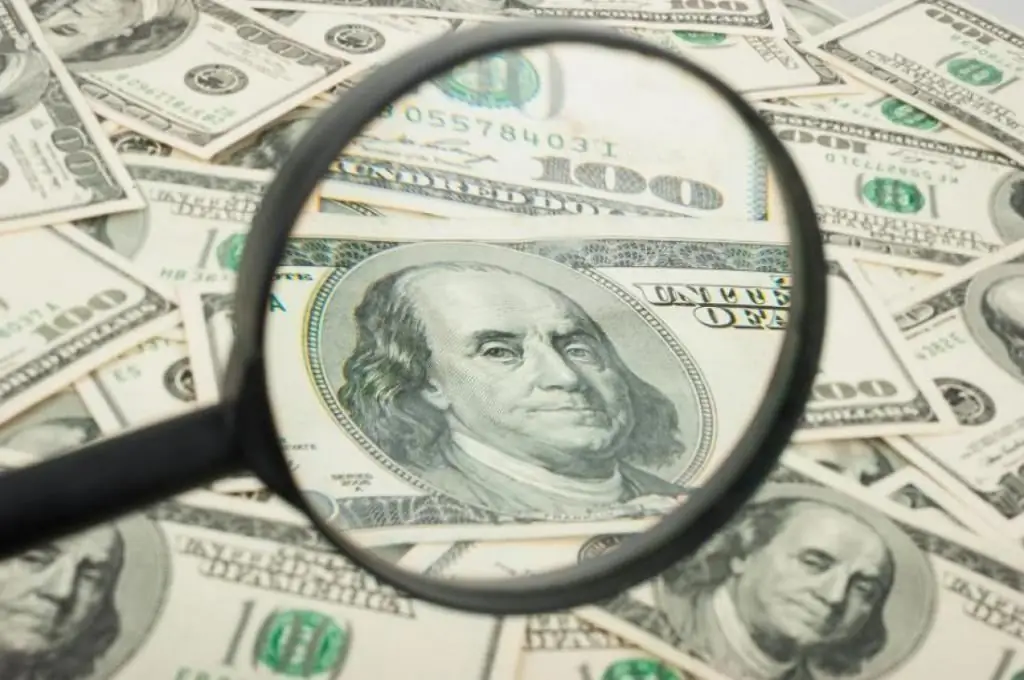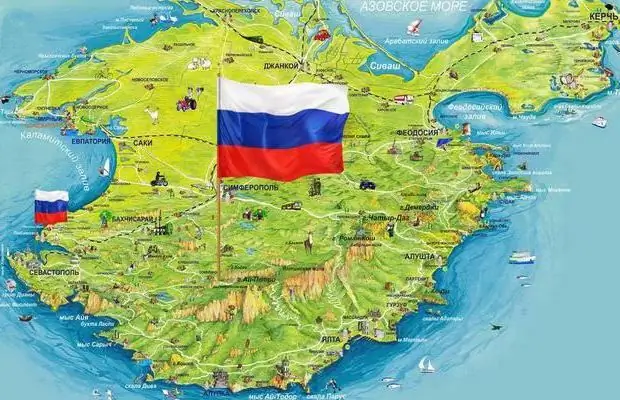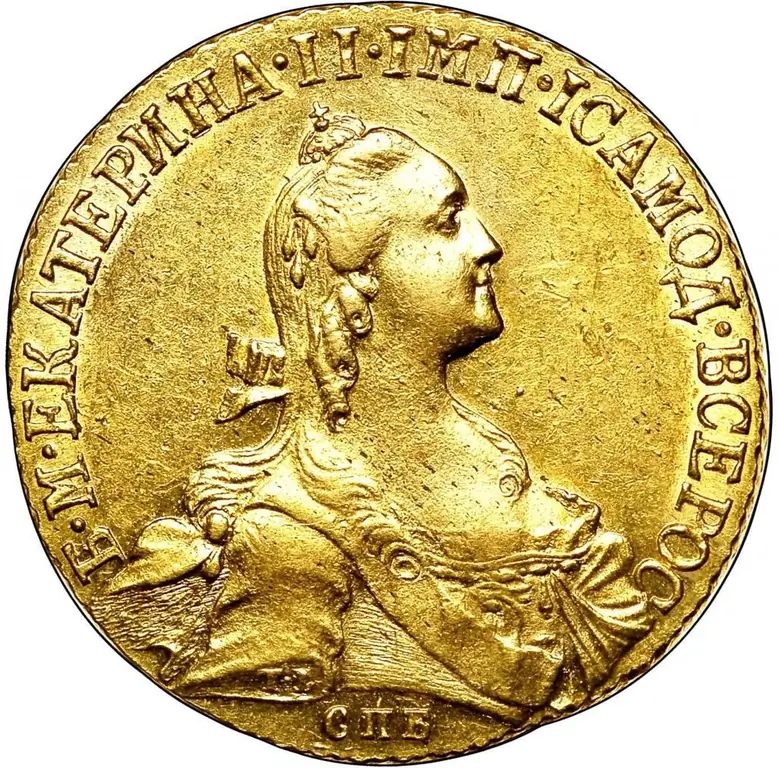2025 Author: Howard Calhoun | [email protected]. Last modified: 2025-06-01 07:12:56
The banknote "5000 rubles" is perhaps one of the largest banknotes of modern Russia. It is not so rare, but the trouble is that not every Russian can boast of at least a minimal knowledge of the signs of the authenticity of banknotes of this denomination. Such negligence sometimes leads to very sad consequences.
History of Appearance
The banknote "5000 rubles" for the first time in the history of Russia was developed by the Provisional Government in 1917 and put into circulation in 1918 by the government of the RSFSR. She looked like the notorious "Kerenki" and had a double-headed eagle on the back. At the time of the beginning of its existence, this banknote was the most "expensive" banknote of the country and was issued as the wholesale depreciation of money. But in 1996 (as in 1920) this "money" was already one of the smallest, which was the result of rapidly growing inflation.
How a banknote became a coin
The "5000 rubles" banknote, the photo of which is presented below, was put into circulation on 10/31/95 and did not last long.

The banknote of green color had on the obverse the image of the monument "Millennium of Russia", located against the backdrop of one of the most ancient temples of Russia - St. Sophia Cathedral. On the reverse side, a fragment of the fortress wall of the Novgorod Kremlin is printed. The size of the banknote "5000 rubles" of the 95th year of issue is 137 x 61 mm, the serial number is affixed to the right and left on the white fields, the image of the cathedral and the number 5000 are watermarks. The denomination on the back of this banknote is written three times, and on both sides there is an inscription words - "Five thousand rubles."
Unfortunately, the life of this banknote was short-lived, only 3 years - as a result of the denomination that took place in 1998, the zeros were "stolen" from it, and it turned into a five-ruble note with the same design. But this banknote did not last long - a little later, in 2001, it was replaced by a coin of the same denomination.

At first it was like this
In modern Russia of the 21st century, the first banknote "5000 rubles" was put into circulation at the end of July 2006 and became the largest of the "urban" series (views and memorable places of several cities of Russia are on the back of the banknotes). Initially, its circulation was planned as insignificant, it was assumed that it would have the greatest circulation in regions with an increased level of wages among the population. However, it quickly spread throughout Russia, which led to the need for additional types of protection. So after 5 years the bank note was reissued again.
Images - where they come from
Few people know that the monument depicted on the "five thousand" has a difficult fate. Three fairly well-known sculptors took part in the competition for the development of a sketch for it - M. M. Antokolsky, M. O. Mikeshin and A. M. Opekushin, who defeated the other applicants. At the end of 1890, a finished statue was delivered from St. Petersburg to Khabarovsk, after only 35 years the monument was demolished and sent to the museum, where it lay for many years, and in wartime it was sent for remelting. Only at the end of the 80s, at the expense of caring people, the monument was restored, and in 1992 its grand opening took place.
The banknote "5000 rubles" has a very beautiful reverse side - it depicts a bridge across the Amur River - a monumental two-tiered structure with a separate road and railway tracks. The construction of this masterpiece began on July 30, 1913, and it was planned to complete it in just 26 months, which is simply incredible for such a hulk. In Warsaw, special metal trusses were produced, which were then transported through Odessa to Vladivostok (by sea), and there they were reloaded onto special platforms and delivered by rail to Khabarovsk. The bridge was already almost completed, 18 huge farms took their places, but the First World War violated the grandiose plan. In the fall of 1914, the German cruiser Emden sank a steamer with the last two bridge trusses in the Indian Ocean. So the last two designs had to be re-ordered in Canada and shipped to Russia. Already October 5, 1916years this majestic building was ready - the bridge was open to traffic. Interestingly, at the time of its opening, the bridge across the Amur was the largest railway structure in the Old World, and more than 13.5 million rubles were spent on its construction.
Size and Description

Let's return to the banknote itself - the sample of the "5000 rubles" banknote has a fairly presentable appearance and is made in red-brown tones, multi-colored fibers are interspersed in the paper - gray, blue, red and light green. Thematically, the banknote is dedicated to Khabarovsk - on the front side you can see the embankment, and in the foreground there is a monument to Muravyov-Amursky (governor general), on the right is the coat of arms of the city. On the back there is a panorama of the automobile and railway bridge across the Amur.
The size of the banknote "5000 rubles" corresponds to the usual "thousand" - 157 x 69 mm, the banknote is equipped with several types of security signs, which are worth talking about in more detail.
How to determine authenticity
Of course, it would be nice to always have devices with you to help confirm the presence of signs of the authenticity of banknotes, but in practice this is not possible. In addition, the correct protection of bank notes should provide an opportunity to distinguish a fake for all categories of the country's population, including visually impaired citizens. So “5000 rubles” is a banknote, the signs of originality of which can be determined not only visually, but also by touch:
- the coat of arms of the city is appliedusing OVI paint with a variable optical effect - when you change the angle of view, the color changes from green to crimson;
- there is a field with hidden MVC stripes - when viewed perpendicularly from a distance of 30-40 cm, this part of the banknote is perceived as a solid color, and stripes are visible when tilted;
- the height of the digits of the serial number on the right is gradually increasing;
- there are watermarks visible through the light: on the right - the head of the monument, and on the left - the number 5,000;
- the emblem of the Bank of Russia printed on the banknote has a polarizing effect;
- there is a digital denomination made using perforation;
- some element located to the right of the inscription "Bank of Russia Ticket" is printed on an uncolored field (colourless embossing);
- microtext applied - upon very close examination, you can see continuously repeating signs "5000" and "CBRF 5000";
- metalized diving filament, 3 mm wide, surfaced five times from the reverse side of the bill;

Besides this, there are a few other signs that are quite difficult to see with the naked eye.
"5000 rubles". 1997: banknote modified
As you know, as long as there is money, there are so many who want to fake it. So the same thing happened with the new "five thousand" - in just 9 months of 2011, a huge number of fakes totaling more than 100 million rubles were withdrawn from circulation. A large proportion of them werefive thousand banknotes. Therefore, it was decided to improve the protection of banknotes of such a high denomination according to the model adopted in 2010.
Despite the fact that the cost of the new "five thousandths" was 24% higher than the previous ones, this step turned out to be quite justified - the number of fakes decreased several times.
What's different
The new banknote "5000 rubles" did not differ too much in appearance, they even left the year of development of the previous sample on it. The most notable difference was the inscription "2010 Modification", which was applied to the lower part of the left margin on the front side.

The differences are as follows:
- only two types of fibers remained in the thickness of the paper - gray and two-color;
- in the paper itself there is a security thread that comes to the surface from the front side of the bill through the “stained glass window”;
- on the right margin is a combined watermark;
- on the lower field, which, as in the previous case, has moiré stripes using MVC + technology, there are elements with visible parts in the form of colored stripes;
- thin protruding (embossed) strokes are applied along the edges of the coupon fields on the front side;
- digits of the left serial number gradually increase in height towards the center of the banknote;
- The coat of arms of the city has a rich green color and is applied using OVMI optical paint - a bright horizontal stripe moves from the center up and down depending on the angle of view;
- on the reverse side applied a widemulti-colored stripe, made in the form of an ornament;
- some parts of the picture are magnetic;
- changes have been made to the design of the banknote, visible under infrared and ultraviolet light.
In general, the 2010 modification of the 5000 ruble banknote has eighteen degrees of protection and is considered one of the most difficult to counterfeit banknotes in the world.
Signs of authenticity
Of course, with the level of today's technology, a visual inspection will help protect you only from the most rude, "clumsy" fakes. But in order not to get into an unpleasant situation, it is necessary to know some of them.

In addition to the features already listed, five thousandth banknotes have:
- protruding inscription - "Ticket of the Bank of Russia", next to which there is an element applied by embossing (colorless);
- value 5,000, made with perforation (small holes);
- microtext - continuously repeating writing of the number 5000 and 5000 CBRF;
- additional thread (protective);
- surface micropattern;
- graphic drawing on the far bank of the Amur (on the back) - if you look at this part of the banknote with a magnifying glass, you can see stylized silhouettes of trees, tigers, bears and fish, as well as the letters "CBRF";
- application of the kipp effect - when examining the banknote from a certain angle, you can notice lighter letters "PP" on the tape.
Of course, remembering all the signs of authenticity is not easy, but, according toexperts, in order to protect yourself from forgery by 70%, it is enough to find 3-5 matches.
What to do if you find a fake
According to data released by law enforcement agencies, counterfeit banknotes do not decrease from year to year, and counterfeit banknotes "5000 rubles" are especially popular with fraudsters and take an honorable second place after "thousands". What should you do if you suddenly find yourself with fake bank tickets:
- if you are not able to independently determine the authenticity of the banknote, you can take it for verification to the nearest branch of any bank, but be prepared for the fact that employees of a financial institution may call the police for a trial;
- when you are sure that the banknote is counterfeit, you can take it to the nearest police station;
- if you found a fake before you paid for your purchases in the store, it is best to destroy it (burn it, tear it into small pieces);
Since counterfeit banknotes "5000 rubles" have recently become common, and it is a pity to lose such an amount, many may want to get rid of it by buying goods, "slip it to your neighbor." Doing this is highly discouraged. Remember, if you knew that the banknote was counterfeit and tried to pay with it, you become an accomplice in crime and can be punished in accordance with the law.
Interesting facts

Another cognitive question that has not yet beenwill be affected: "How much does the banknote "5000 rubles" weigh?" There are two opinions on this matter: given that 1 m2 of the paper used to print money weighs about 96 grams, then, accordingly, a bank note measuring 157 x 69 mm will be weigh approximately 1.08 grams. According to another version, it is believed that since officially registered data on the weight of banknotes of the Russian Federation does not exist in nature, then you can use some average table, from which it follows that 5,000 r. weighs 1.02 grams. Of course, this applies only to new, freshly printed banknotes. Thus, by making simple calculations, you can find out that, for example, a million rubles in five thousandth bills will weigh from 204 to 216 grams. Not bad, right?
Recommended:
Signs of the authenticity of banknotes: how to distinguish a fake banknote from a real one

The main signs of the authenticity of banknotes of 200, 500, 1000, 2000 and 5000 rubles of the Bank of Russia and foreign currencies. Methods for verifying the authenticity of banknotes, precautions and consequences for the distribution of counterfeit banknotes
What do thousand dollar bills look like? Description and photo. How to recognize a counterfeit banknote

Would you like to check the authenticity of thousand dollar bills? Don't know how to do it? In this article, we have described the most common verification options
Crimea: banknote of 100 rubles. Photo of the new hundred-ruble banknote

The article is dedicated to the new one hundred-ruble banknote issued in honor of the annexation of Crimea to the Russian Federation
What is a gold coin: concept, appearance, year of issue and history of appearance

What is a gold coin? What is this word used to mean? What is the significance of this item? What is the history of this designation? How has the meaning changed? These, as well as a number of other, but similar questions, will be considered within the framework of the article
10 rubles "Chechen Republic". Where to buy and not how to run into a fake

Many who are at least a little fond of numismatics will agree that the coin of 10 rubles "Chechen Republic" is the most famous. In the people it is often called simply "Chechnya"

